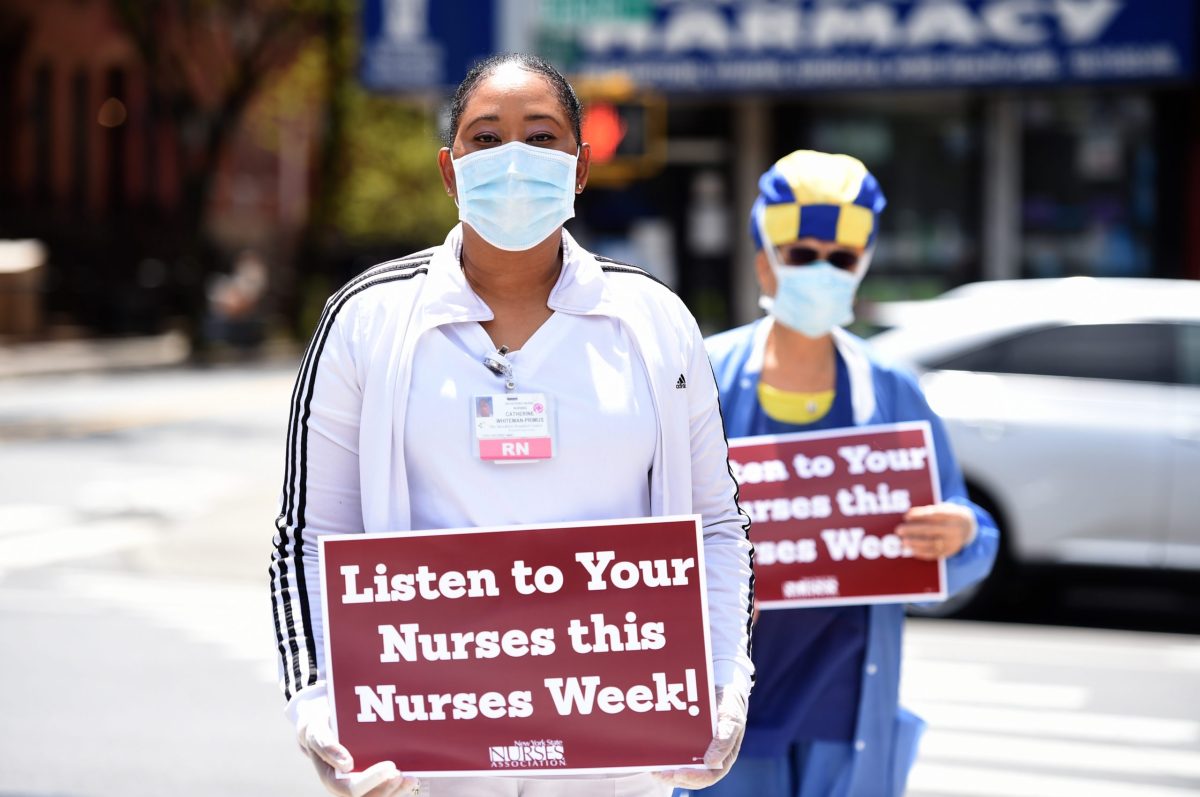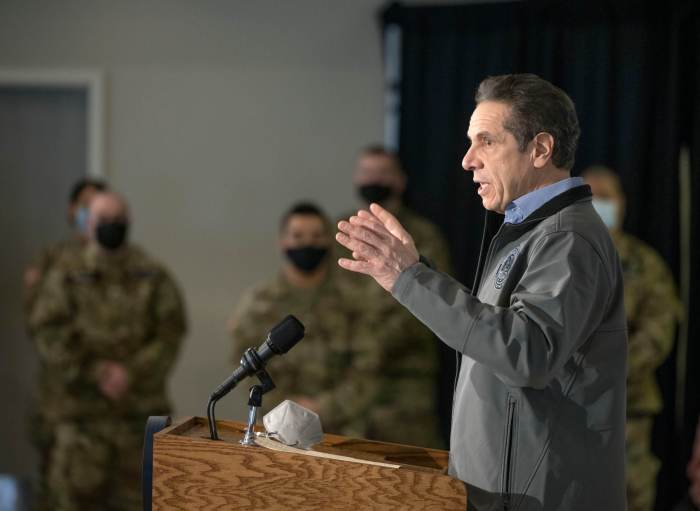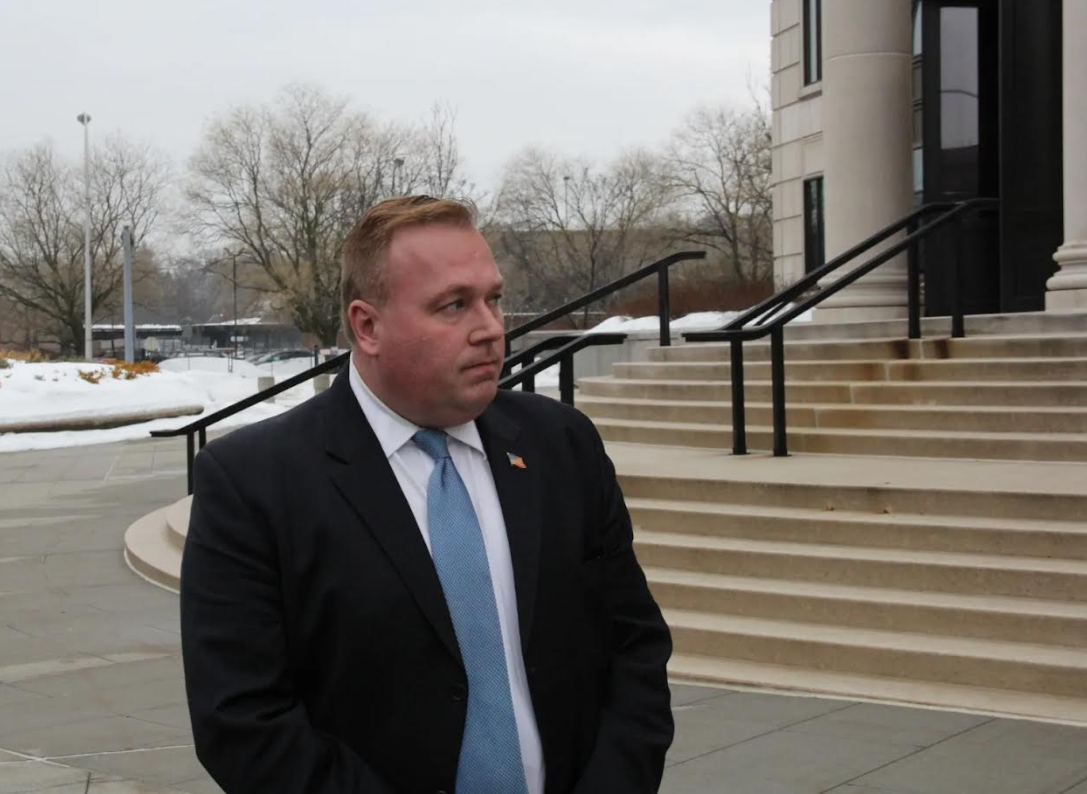The names and images of no fewer than three dozen New York nurses who died of COVID-19 line a digital memorial that the New York State Nurses Association (NYSNA) created to honor their sacrifice on the front lines of the pandemic battle.
In many ways, the memorial serves as a continued reminder of the pandemic’s cost as well as the need to ensure that all nurses in New York receive the proper protection and staffing to safely care for their patients.
With New York set to observe National Nurses Week (May 6-12) — an annual salute recognizing the caregivers who work tireless to heal and comfort the sick — the nurses of the Empire State are set to receive some much-needed support from Albany.
On Tuesday, New York lawmakers are scheduled to pass two bills aimed at creating “Safe Staffing” standards for medical centers in the Empire State.
Such standards — which include establishing a minimum patient-to-nurse ratio — have been items for which nurses have long advocated, but had been put on the back burner by Albany lawmakers. The COVID-19 pandemic, however, exposed the critical situation nurses too often face in acute and long-term care facilities after years of budget cuts and reduced staffing.
As Nancy Hagens, NYSNA treasurer and a registered nurse at Maimonides Hospital in Brooklyn, described it, the staff quickly adapted as the pandemic struck last year.
“Overnight, our med-surg (medical/surgical) nurses had to become ICU nurses,” Hagens said Tuesday during a press conference on the Safe Staffing bills. “You could imagine we were at a deficit to begin with. Now, we have the pandemic, and as nurses, we have to do what we needed to do in order to care for our patients and save as many lives as we can. We truly believe that if we had enough staffing, if we had a nurse-patient ratio, we could have saved more lives.”
Aja Sciortino, a nurse in the pediatric ICU unit at Westchester Medical Center, underscored that point, emphasizing that studies from the National Institute of Health and others have demonstrated that a patient’s health is largely dependent upon how well the nurses are able to care for them.
“We had situations where we needed one-to-one patient to nurse ratios, but sometimes we were up to two to three patients to one nurse,” Sciortino said. “Three patients to one nurse puts nurses in danger, especially if they (the patients) have a high acuity, [and] are critically ill. These types of staffing issues affect nursing satisfaction. They endanger nursing licensure and it leads to nursing burnout. Even more importantly, it affects the safety of our patients.”
The Safe Staffing legislation will mandate that hospitals adopt staffing plans created by committees of frontline registered nurses and other health care staff at each facility. These plans will “clearly indicate patient assignments for nurses and other direct care staff by unit and shift,” according to the NYSNA.
Hospitals across the Empire State will be required to abide by the staffing plans, with the state Health Department (DOH) taking the lead on enforcing them, the NYSNA noted. Members of the public will also be able to view the staffing plans for each hospital on the DOH website.
The legislation also includes a mandate that the DOH create new minimal staffing standards for intensive care and critical care units statewide by Jan. 1, 2022.
Bronx state Senator Gustavo Rivera and Orange County Assemblywoman Aileen Gunther sponsored the Safe Staffing bills due to pass both chambers of the state legislature Tuesday, and be sent to the desk of Governor Andrew Cuomo for his signature.
Rivera called the bills’ imminent passage “a historic moment,” noting that he has participate in so many meetings about the Safe Staffing bills very frequently in the 11 years he’s served in the state Senate. He gave credit to state Senate Majority Leader Andrea Stewart-Cousins for working to move the legislation forward to an anticipated approval.
“Everybody came together and knew this was something that needed to be addressed,” he said. “We’re figuring out a mechanism that will have a positive impact on their patients.”





































